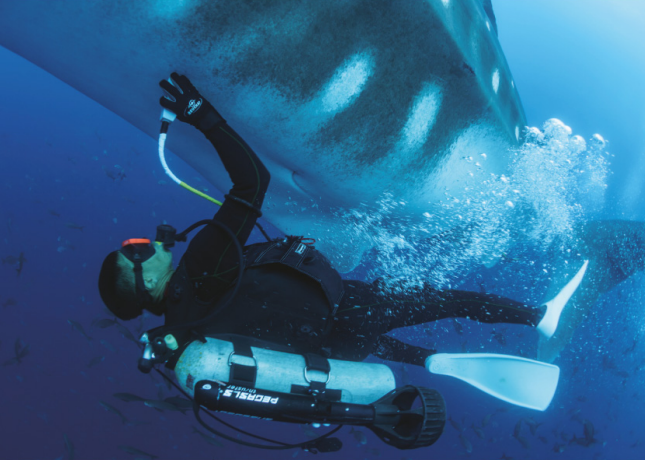Rui Matsumoto, Kiyomi Murakumo, Ryo Nozu, David Acuña-Marrero, Jonathan R. Green, Simon J. Pierce, Christoph A. Rohner, Harry Reyes, Sofia M. Green, Alistair D. M. Dove, Maria L. Torres, Alex R. Hearn.
Informamos sobre una técnica no invasiva para observar los estados reproductivos de los tiburones ballena Rhincodon typus salvajes que nadan libremente por primera vez. Tiburón ballena hembra (n = 22) fueron evaluados usando ultrasonografía subacuática y una nueva técnica de muestreo de sangre en la Isla Darwin en la Reserva Marina de Galápagos, Ecuador. A pesar de la suposición ampliamente sostenida entre investigadores que la distensión pospélvica de hembras grandes es indicativa de embarazo, ecografía no proporcionó evidencia de embriones o cajas de huevos. Sin embargo, se confirmó la presencia de folículos (diámetro: 28,5-83,6 mm) en 2 tiburones hembra de 11-12 m de longitud total (LT). Además, se analizaron 3 hormonas esteroides (estradiol, testosterona y progesterona) en plasma sanguíneo de 6 tiburones hembra (11-12 m LT). Los niveles hormonales fueron similares o inferiores a los obtenidos de una hembra inmadura en el Acuario Churaumi de Okinawa. Con base en estos resultados, inferimos que las hembras de tiburón ballena (LT >11 m) en este estudio estaban maduras pero no preñadas. Las técnicas utilizadas aquí para los tiburones ballena se puede utilizar con éxito para obtener datos de campo no letales sobre la biología y la anatomía reproductiva de este pez en peligro de extinción a nivel mundial, y son adaptables para su uso en otras especies marinas grandes.
Conoce más del estudio científico aquí.






